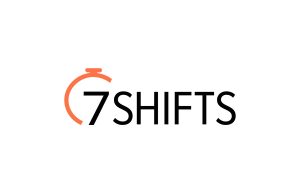Thanks to the COVID-19 vaccine rollout and the $2 trillion stimulus, tech budgets are expected to increase by 6% in 2021.

Image: Tashatuvango/Shutterstock
Since Forrester’s last tech spending forecast in December 2020, the outlook for the U.S. economy and Washington gridlock have improved considerably. As a result, Forrester is projecting that U.S. tech budgets will expand by 6% in 2021 and 7% in 2022, not contract by -0.4% as previously forecast.
SEE: Juggling remote work with kids’ education is a mammoth task. Here’s how employers can help (free PDF) (TechRepublic)
“After three months, a lot has changed,” the report said. “It now seems likely that most U.S. adults will be vaccinated by May 2021. The Georgia election of two Democratic senators shifted control of the U.S. Senate to the Democrats, enabling the passage of a $1.9 trillion economic stabilization bill on top of the $650 billion act passed in January 2021. And Q4 2020 data on the U.S. economy and tech investment showed that the 2020 recession was not nearly as bad as we had feared.”
At $431 billion, the largest share of spending will be on software and services, followed by tech staff ($423 billion), and tech consulting ($315 billion). At 12.4%, communications equipment will experience the largest year-over-year percentage growth rate.
To keep up with an expanding U.S. economy, new project spending is expected to grow by 7.8% in 2021 and 11.7% in 2022. Keep-the-lights-on spending for IT and business operations will grow by 4.8% in 2021 and 5.5% in 2022 as companies restart back-office projects put on hold in 2020.
Driven by e-commerce providers such as online retailers, delivery services and warehousing, spending on tech staff surged 5.3% in 2020. Those numbers are projected to increase 4.6% in 2021 and 5.4% in 2022.
SEE: IT expense reimbursement policy (TechRepublic Premium)
Of all the verticals, healthcare will experience the strongest tech budget growth of 10% as federal funding for pandemic care and a resumption of normal medical care provide a revenue surge. This is followed by chemicals, transportation, high-tech and construction, which will grow by 8% to 10%. Government tech spending is projected to grow by 7%, while most other industries will see only modest growth of 3% to 6%.
The tech budgets for leisure and entertainment, oil and gas, social services, and non-profits will remain more or less fixed at 2020 levels.
These numbers could be impacted up or down by four factors. On the plus side, vaccinations could revive the travel and leisure sectors and Europe and Latin America could have stronger than expected recoveries. Downside risk comes from vaccine-resistant strains of the coronavirus leading to new lockdowns, or inflation fears and higher taxes leading to reduced housing and business investment.
“As always, this tech market forecast rests on assumptions about the economic outlook,” the report said. “In some cases, our assumptions could be too conservative. Should that prove to be the situation, U.S. tech market growth would be stronger than our forecast. But if our economic assumptions are too optimistic, the tech market would not do as well as our forecast.”
Also see
Source of Article




